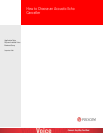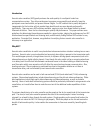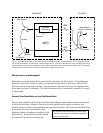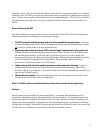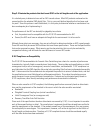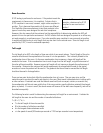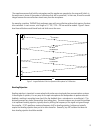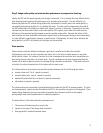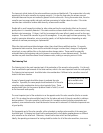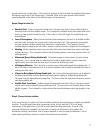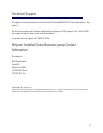Introduction
Acoustic echo cancellers (AEC) greatly enhance the audio quality of a multipoint hands-free
communications system. They allow conferences to progress more smoothly and naturally, keep the
participants more comfortable, and prevent listener fatigue. An AEC solution that is poorly designed or
inappropriate for the location will not provide these benefits and can even degrade audio quality
significantly. There are many AEC solutions available, ranging in price from several dollars to several
thousands of dollars. There is also a broad range in quality and performance. This paper outlines some
guidelines for determining the performance needed in a given location, judging the performance of an AEC
solution based on specifications and listening tests, and ultimately finding the best AEC solution for any
application. Presented first, however, are guidelines for verifying that an acoustic echo canceller is
necessary in an application.
Why AEC?
Acoustic echo cancellation is useful in any hands-free telecommunications situation involving two or more
locations. Acoustic echo is most noticeable (and annoying) when delay is present in the transmission path.
This would happen primarily in long distance circuits, or systems utilizing speech compression (such as in
videoconferencing or digital cellular phones). Even though this echo might not be as annoying when there
is no delay (such as with short links between conference rooms in the same building or distance learning
over fiber-optic cable), room acoustics will still affect the sound and may hamper communication. Also,
howling can occur if the microphone is positioned too close to the speaker whether or not there is
transmission delay, and is eliminated by most acoustic echo cancellers.
Acoustic echo cancellers can be used in both narrow band (3.5 kHz) and wide-band (7 kHz) conferencing
systems. Narrow band applications include teleconferencing and low bit-rate video conferencing. Wide-
band applications include high quality teleconferencing and videoconferencing, as well as distance
learning. Users of wide-band conferencing systems should be particularly interested in using acoustic echo
cancellation, as it would allow them to make the most out of the additional audio capabilities of their
systems.
The primary beneficiaries of an echo canceller are the people at the far (or remote) end of the transmission
path. The near (or local) echo canceller prevents the echo of the remote peoples’ voices from being
returned (i.e. echoed) to them through the audio system. People speaking on the same (local) end as the
AEC should not notice the AEC if it is doing its job properly. While the people on the far end receive the
benefit of better audio quality, it also enables the conversation to flow more smoothly, benefiting both
parties.
2



